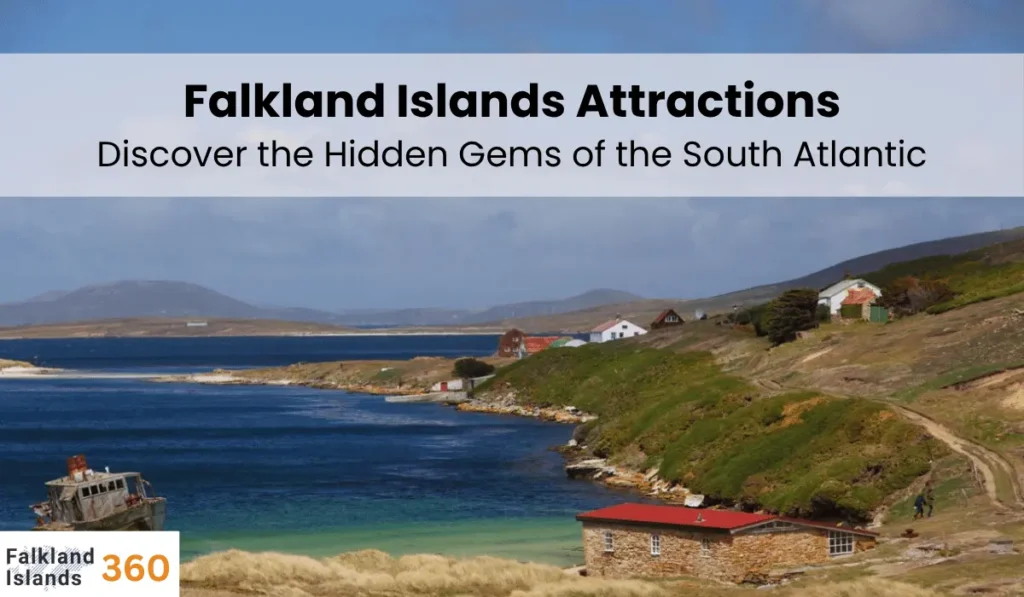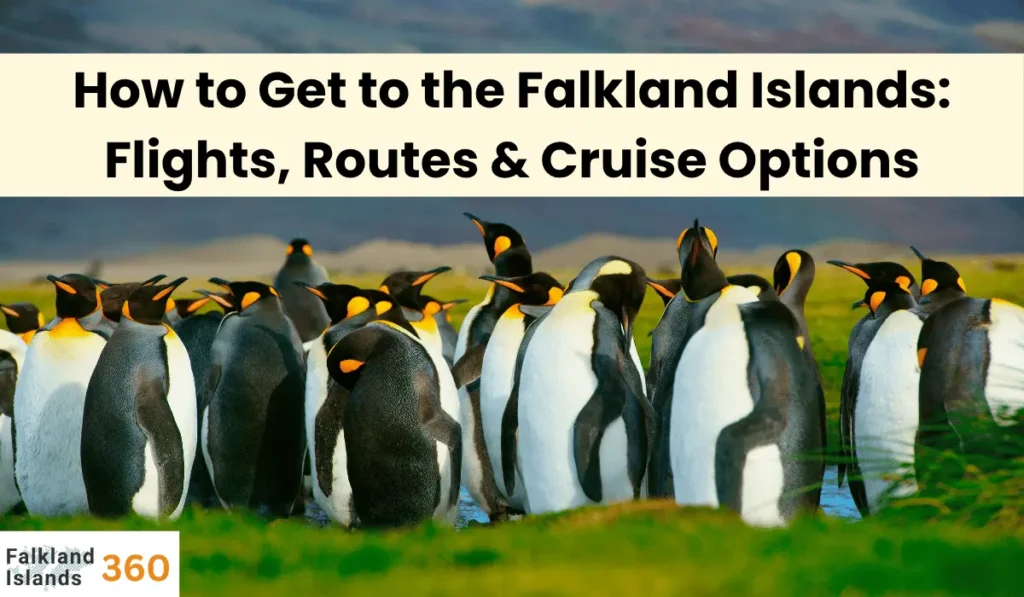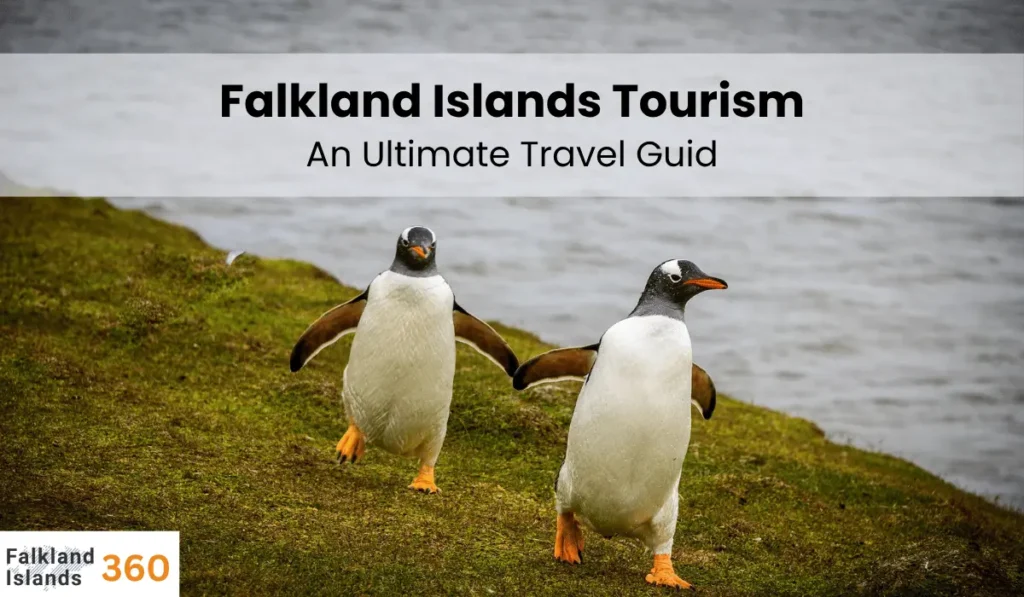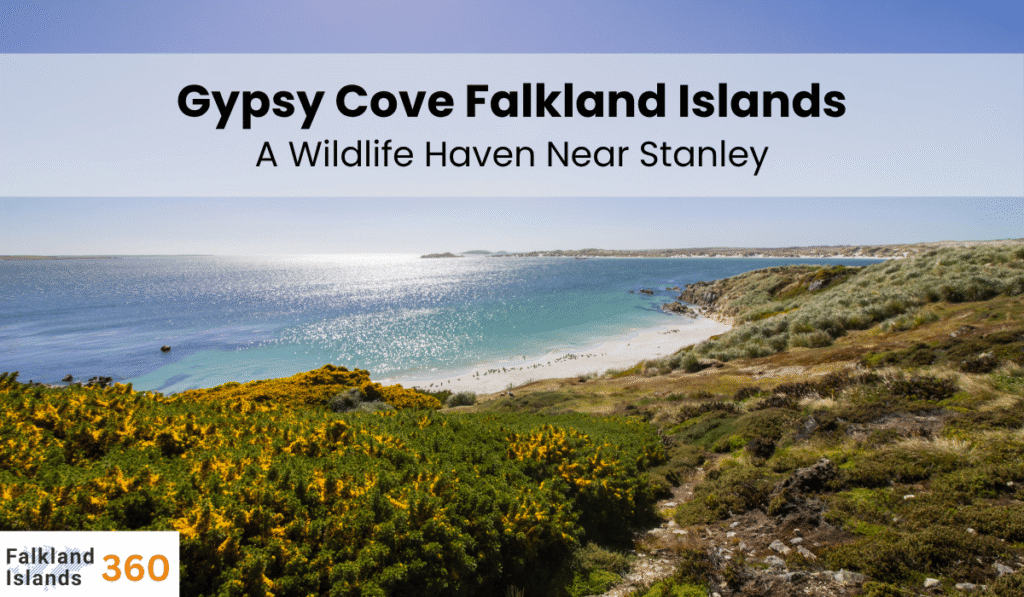Surrounded by windswept coastline and emerald hills, the Falkland Islands offer nature lovers a unique South Atlantic adventure. Often called the “penguin islands,” they host large colonies of king, gentoo, Magellanic and rockhopper penguins. Visitors flock to these Falkland Islands attractions for the raw wildlife – from albatrosses and flightless steamer ducks to elephant seals, sea lions and even visiting whales.
The islands’ rugged landscapes and British-flavored villages make this a must-see destination for wildlife experiences in Falkland Islands – truly a journey where “nature is still in charge”.
How to Get There
The Falklands are reachable by air or sea. By air, regular flights land at Mount Pleasant Airport on East Falkland. LATAM operates a weekly service from Santiago, Chile (stopping in Punta Arenas), and the UK’s RAF flies twice weekly from Brize Norton (via Ascension Island). (Civilian seats on RAF flights can be booked through official offices.) All flights arrive at Mount Pleasant, from which buses run to Stanley. In summer, cruise ships also regularly call at the Falklands – over forty lines include the islands on their itineraries, making it easy to include these attractions on an Antarctic or South American voyage.
Things to Do in Falkland Islands
- Wildlife Watching: Search for penguin rookeries and seal colonies on remote shores. Many tour companies offer guided wildlife excursions – expect gentoo, king and Magellanic penguins, black-browed albatrosses, and possibly orcas offshore.
- Birding: The Falklands are a birdwatcher’s paradise. Look for giant petrels, striated caracaras, Falkland steamer ducks, Cobb’s wrens and more.
- Hiking & Nature: Explore lush hills and dramatic cliffs. Trails range from easy coastal walks to the summit of Mount Usborne (705 m) – the islands’ highest peak with sweeping views. Pack layers and rain gear as the weather can change quickly.
- History & Culture: Take battlefield tours of 1982 war sites, and visit museums in Stanley. Experience local life with fish-and-chips shops, cozy pubs, and Falklands traditions. The capital’s British charm is everywhere – from colonial-era Government House to the town’s whale-bone arch.
- Boat Tours: Cruise among islands in a zodiac. Tours to outer islands reveal marine life – from seal-watching to possible whale sightings.
Top Local Attractions of Falkland Islands
Exploring the top Falkland Islands attractions reveals a mix of nature and history:
Stanley (Port Stanley): The only city is a British-style town full of charm. Visit Christ Church Cathedral, stroll past the famous Whalebone Arch, and explore the Falkland Islands Museum and Liberation Memorial. Stanley’s waterfront is lined with war relics and shipwrecks, and Government House (built 1845) serves as the Governor’s residence.
Gypsy Cove: A short drive from Stanley, this sheltered white-sand bay is a Nature Reserve. Magellanic penguins nest here in burrows, and you’ll often see imperial cormorants, Falklands flightless steamer ducks and even resting sea lions. Historic WWII gun emplacements overlook the rocky coast – a scenic picnic spot after a beach stroll.
Volunteer Point: A remote peninsula in northeastern East Falkland, Volunteer Point boasts the islands’ largest breeding colony of king penguins. Visitors (by agreement with the landowner) see hundreds of golden-crested adults and fluffy chicks. Gentoo and Magellanic penguins also share the dunes. This is the ultimate wildlife experience on the Falklands.
Bluff Cove Lagoon: A popular day-trip stop, Bluff Cove features a white-sand beach and historic huts. It is home to gentoo and king penguin colonies. Nearby you can visit a small local museum and the cozy Sea Cabbage Café for tea and cake. The wide lagoon and surrounding wetlands attract rare birds, making it a highlight for photographers.
Pebble Island: This “wildlife island” is famed for its abundance of fauna. All five Falklands penguin species breed here. Offshore, you may spot Commerson’s dolphins and see southern sea lions basking on the beaches. The island’s rugged scenery and tidal lagoons also provide great birdwatching.
Sea Lion Island: True to its name, this southern island hosts breeding colonies of elephant seals and Southern sea lions. The Sea Lion Island Nature Lodge offers guided walks to watch these giants. It’s also an Important Bird Area with thousands of gentoo, Magellanic and rockhopper penguins, plus albatrosses and Falklands songbirds. Sunsets over the sea here are unforgettable.
Bertha’s Beach & Saunders Island: South of Stanley, Bertha’s Beach is a protected nature reserve with golden sands and tidal flats. Over 500 pairs of gentoo penguins nest here, and the lagoon is a haven for shorebirds. Dolphins and sea lions are often seen offshore. Nearby Saunders Island is a working sheep farm turned wildlife sanctuary – it’s home to five penguin species and even elephant seals on its shores. With dramatic cliffs and albatross colonies, Saunders is a birdwatcher’s dream.
Historic Stanley Landmarks: Don’t miss Stanley’s Government House (the Governor’s residence built in 1845). A few miles outside town is the Argentine Military Cemetery, where Argentine soldiers from the 1982 conflict are buried. Adventurous visitors can hike up Mount Usborne – at 705 m it’s the highest point in the Falklands, with panoramic views of the islands.
Best Time to Visit Falkland Islands
The ideal season is southern spring and summer. Plan your trip between October and March, when daylight is long and wildlife is most active. Peak conditions are November through February: penguins are breeding and many migratory birds are present. Weather is milder then, though still cool – bring layers. Winters (May–August) are cold and windy, but if you don’t mind the chill they offer a chance to see the aurora australis.
In summary, the Falkland Islands attractions range from spectacular wildlife colonies to stirring historical sites, all set in breathtaking natural beauty. Whether you’re a wildlife lover, history buff or adventure traveler, these hidden gems of the South Atlantic promise an unforgettable experience. Start planning your Falklands journey today – unforgettable adventures await!
FAQs
What wildlife can I see in Falkland Islands?
Expect to see penguins (gentoo, king, Magellanic, rockhopper), albatrosses, sea lions, fur seals, and elephant seals. Whales and dolphins patrol the coastal waters. Birders will spot endemic ducks, flightless steamer ducks, and rare wading birds.
Is it safe to travel Falkland Islands?
Absolutely. The Falkland Islands are very safe for tourists – crime is extremely low and even walking in Stanley at night is trouble-free. The main hazards are weather-related: be prepared for rapid changes (bring windproof and rainproof gear) and respect wildlife (keep a safe distance).
What currency is used in Falkland Islands?
The Falkland Islands Pound (FKP) is the local currency, at par with the British pound. UK pounds and Falklands pounds are both accepted interchangeably. Credit cards are widely accepted in Stanley, but you’ll need cash in outlying areas.
Are guided tours available in Falkland Islands?
Yes, plenty of local and international tours operate here. Wildlife cruises, penguin-watching trips, 4×4 expeditions and historical tours are offered. Many visitors join guided day trips (by boat or minibus) to islands like Saunders or Sea Lion, or take half-day tours of Stanley’s battlefield sites. (Booking ahead is recommended, especially in summer.)
What should I pack to travel Falkland Islands?
Think layers. Even in summer, temperatures can be cool and wind is constant. Pack waterproof outerwear, warm layers and sturdy shoes. Sunblock and sunglasses are essential too, since the clear air makes UV intense. Don’t forget binoculars and camera for the abundant wildlife!




